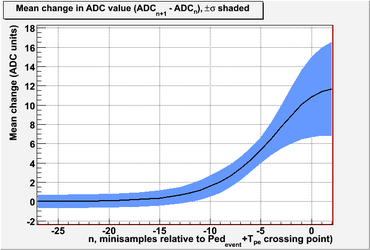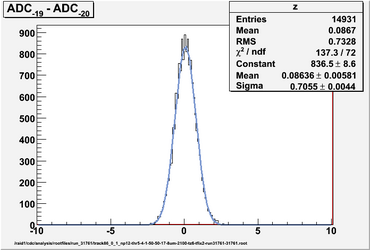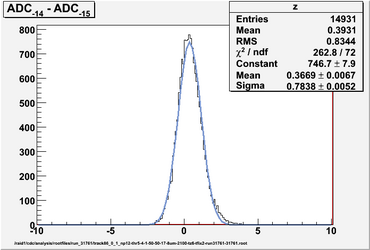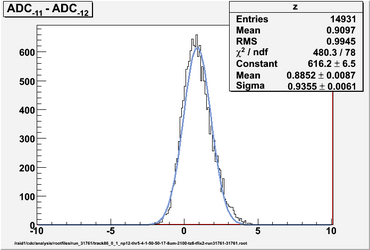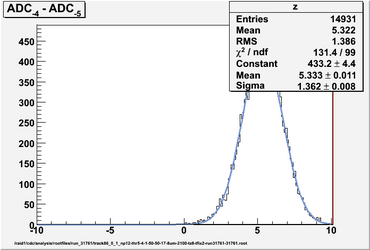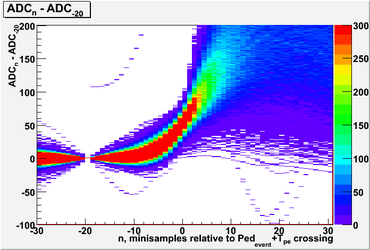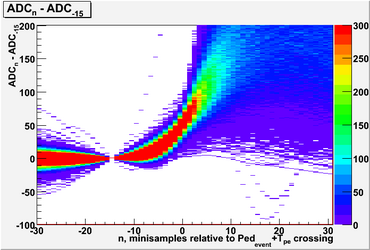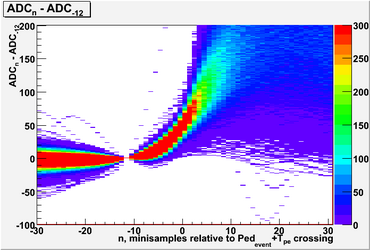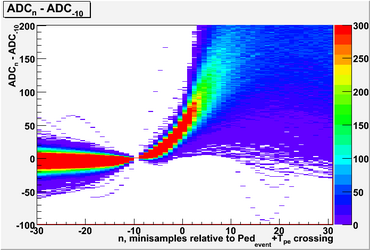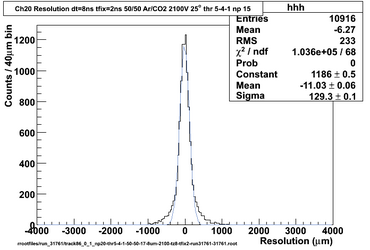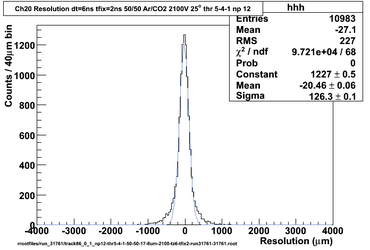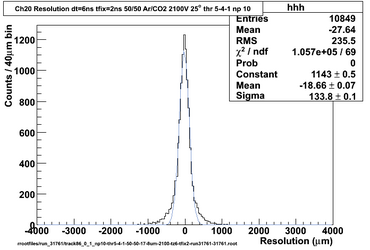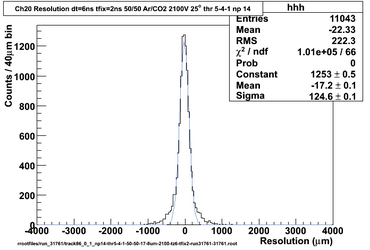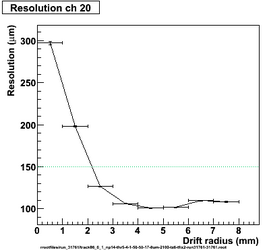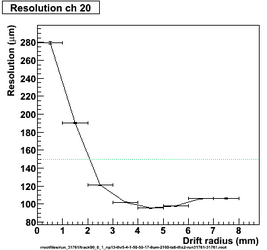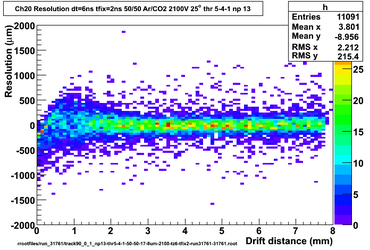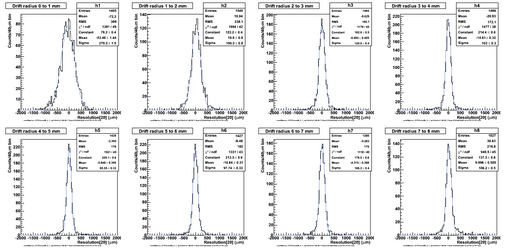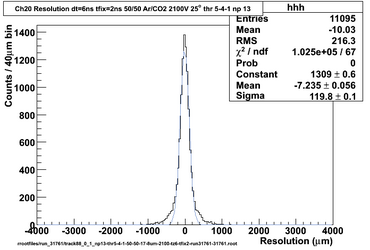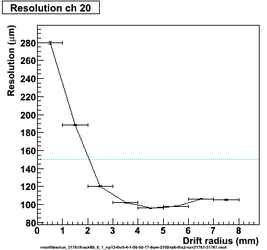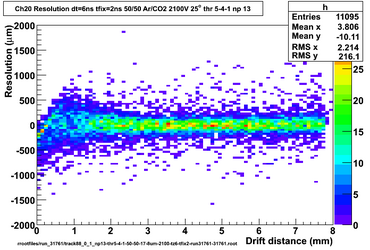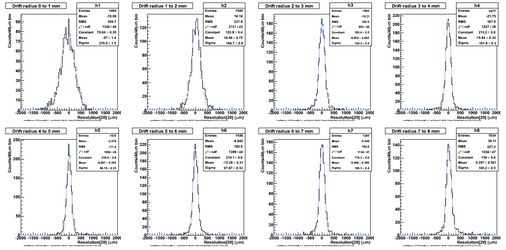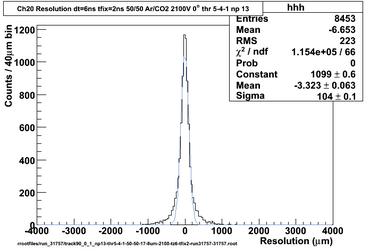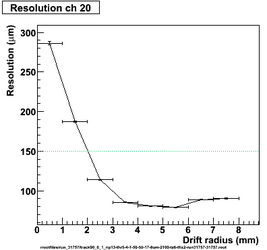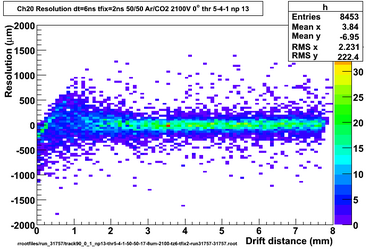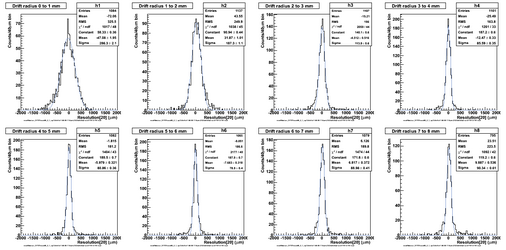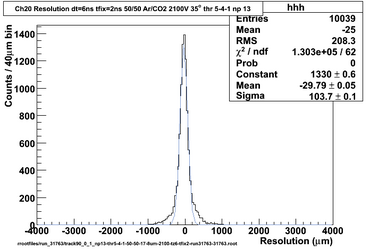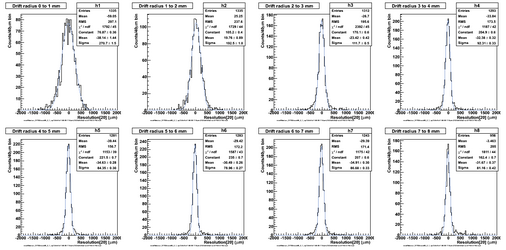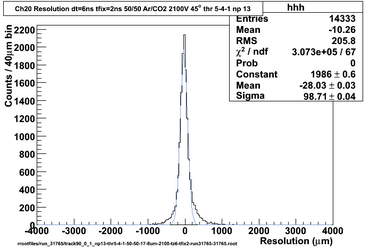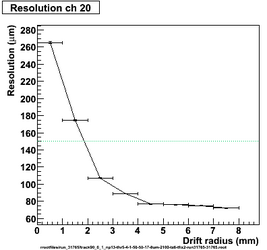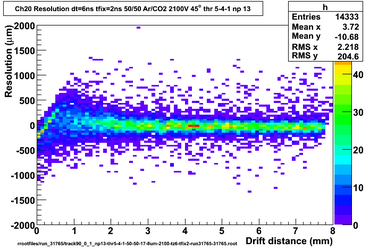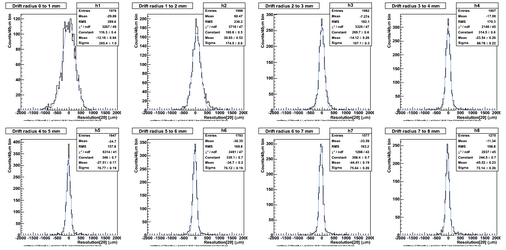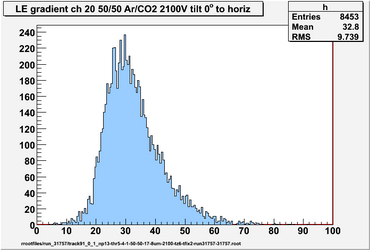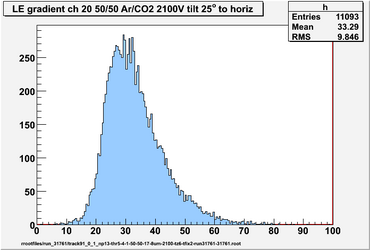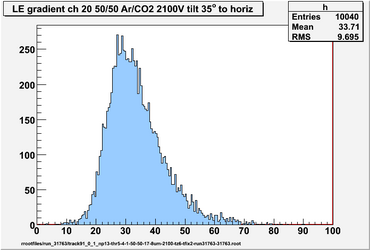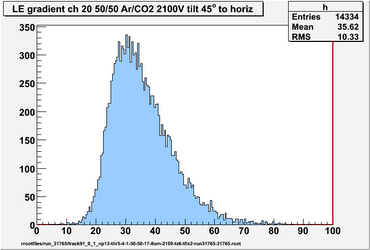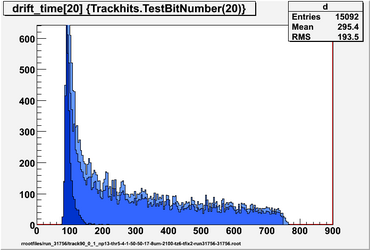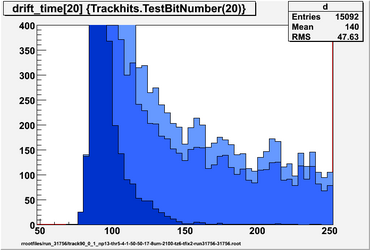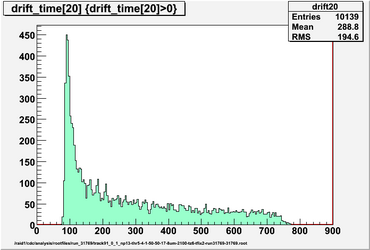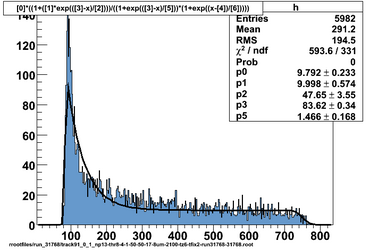Difference between revisions of "CDC prototype more on timing 3"
From GlueXWiki
| Line 117: | Line 117: | ||
|+Drift times for untracked, tracked and first hits in ch20 (first hit = earliest hit of all hits for that event) <br/> Plotted on the suspicion that the peaks in the drift time | |+Drift times for untracked, tracked and first hits in ch20 (first hit = earliest hit of all hits for that event) <br/> Plotted on the suspicion that the peaks in the drift time | ||
histogram are caused by after-event ringing in the prototype. | histogram are caused by after-event ringing in the prototype. | ||
| − | |[[Image:run_31756_dt.png|thumb|x250px|track91 prototype horizontal, | + | |[[Image:run_31756_dt.png|thumb|x250px|track91 prototype horizontal, same settings as previous set]] |
|[[Image:run_31756_dtz.png|thumb|x250px|larger scale]] | |[[Image:run_31756_dtz.png|thumb|x250px|larger scale]] | ||
| + | |} | ||
| + | |||
| + | {| border="0" cellpadding="2" | ||
| + | |+Drift time with top scint disc signal expanded to cover whole of lower scint signal (not just its leading edge)|[[Image:run_31769_drift20.png|thumb|x250px|track91 horizontal same settings as previous]] | ||
|} | |} | ||
Revision as of 10:52, 25 April 2012
Latest approach to hit finding is as follows:
- Find a hit channel and filter events
- Calculate mean pedestal Pm & s.d. (σ) for first 100 samples in 100 events (trigger is approx sample 200)
- Set a threshold Pm + Tpm (Tpm ~ 3.5 σ) for further investigation, select events & channels where adc value exceeds this
- Calculate event pedestal
- Calculate event pedestal Pevt for current event & channel, as mean of 100 samples ending 10 samples before trigger time
- Use event pedestal to find high threshold time and new local pedestal
- Upsample data from samples 150 to 350 (max drift time + trigger time is approx sample 290)
- Select events where adc value goes over a high threshold Pevt + Tpe at point x (Tpe ~ 5sigma))
- Find a local pedestal Ploc as adc value at Np upsampled points (minisamples) before x (eg Np=15)
- Use local pedestal to find high and low threshold times
- Search forward from x-Np to find point x1 where data goes over a slightly less high threshold Ploc + Th where Th ~ 4 σ
- Search backward from x1 to find point x2 where data goes below low threshold Ploc + Tl where Tl ~ σ
To find where to take local pedestal:
File:Run 31761 track86 np5.png 5 minisamples before threshold crossing (tz=6) |
Optimised thresholds and Np - best combination for this data (2100V, 50/50 Ar/CO2, prototype tilted at 25o to horizontal) is Th1 5sigma, Th = 4sigma, Tl = 1sigma and Np = 13 or 14 with dt=6ns.
RMS is least for Drift-time=Projection from Th through Tl to Ploc. Use this to look at data taken with prototype at different angles. All data above were with prototype at 25o to horizontal
Function from G.Avolio et al NIM A523 (2004) 309-322
TF1 *f = new TF1("f","[0] + [1]*(1+[2]*exp(([4]-x)/[3]) ) / ( (1+exp(([4]-x)/[6])) * (1+exp(([5]-x)/[7])) )");
